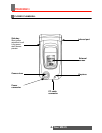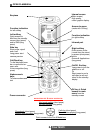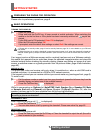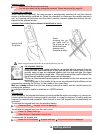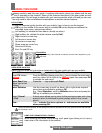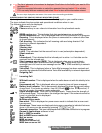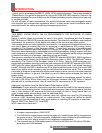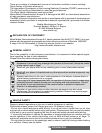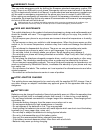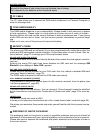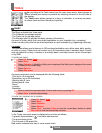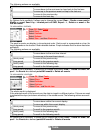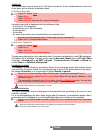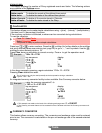
12-
Introduction
INTRODUCTION
hank you for purchasing the M341i (GSM, DCS) mobile telephone. The mobile telephone
described in this guide is approved for use on all GSM 900/1800 networks. Some of the
messages displayed on your mobile may be different according to your subscription type and/
or service provider.
As with all types of radio transceivers, this mobile telephone emits electromagnetic waves
and complies with international regulations when it is used under normal conditions and in
accordance with the safety and warning messages given below.
SAR
THIS M341i PHONE MEETS THE EU REQUIREMENTS FOR EXPOSURE TO RADIO
WAVES.
Before a mobile phone is available for sale to the public, compliance with the European
R&TTE directive (1999/5/CE) must be demonstrated. This directive includes as one essential
requirement the protection of the health and safety of the user and any other person.
Your mobile phone is a radio transmitter and receiver. It is designed and manufactured to en-
sure that it does not exceed the limits for exposure to radiofrequency (RF) energy recom-
mended by The Council of the European Union
1
. These limits are part of comprehensive
guidelines and establish permitted levels of RF energy for the general population. The guide-
lines have been developed by independent scientific organisations through regular and thor-
ough evaluation of scientific studies. The limits include a substantial safety margin designed
to assure the safety of all persons, regardless of age and health.
The exposure standard for mobile phones (CENELEC standard EN 50360: 2000) employs a
unit of measurement known as the Specific Absorption Rate, or SAR. The SAR limit
2
recom-
mended by The Council of the European Union is 2.0 W/kg. Tests for SAR have been con-
ducted using standard operating positions (with reference to CENELEC standard EN 50361:
2000) with the phone transmitting at its highest certified power level in all tested frequency
bands
3
. Although the SAR is determined at the highest certified power level, the actual SAR
level of the phone whilst operating may be well below the maximum value. This is because
the phone is designed to operate at multiple power levels so as to use only the power required
to access the network. In general, the closer you are to a base station antenna, the lower the
power output.
The highest SAR value for this M341i model when tested for compliance against the stand-
ard was 0,356W/kg. Whilst there may be differences between the SAR levels of various
phones and at various positions, they all meet the EU requirements for RF exposure.
Additional information from the World Health Organization (WHO)
Individuals: Current scientific information does not indicate the need for any special precau-
tions in the use of mobile phones. If individuals are concerned, they might choose to limit their
own or their children’s’ RF exposure by limiting the length of calls, or using "hands-free" de-
vices to keep mobile phones away from the head and body.
RF absorbing devices: Scientific evidence does not indicate any need for RF-absorbing
covers or other "absorbing devices" on mobile phones. They cannot be justified on health
grounds and the effectiveness of many such devices in reducing RF exposure is unproven.
Source: WHO Fact Sheet 193, June 2000.
WHO: www.who.int/peh-emf.
1. European recommendation 1999/519/CE
2. The SAR limit for mobile phones used by the public is 2.0 watts/kilogram (W/kg) averaged over
ten grams of tissue. The limit incorporates a substantial margin of safety to give additional pro-
tection to the public and to account for any variations in measurements.
3. The maximum level of GSM emitted power is 250mW at 900 MHz and 125 mW at 1800MHz
according to the GSM standard.
T



